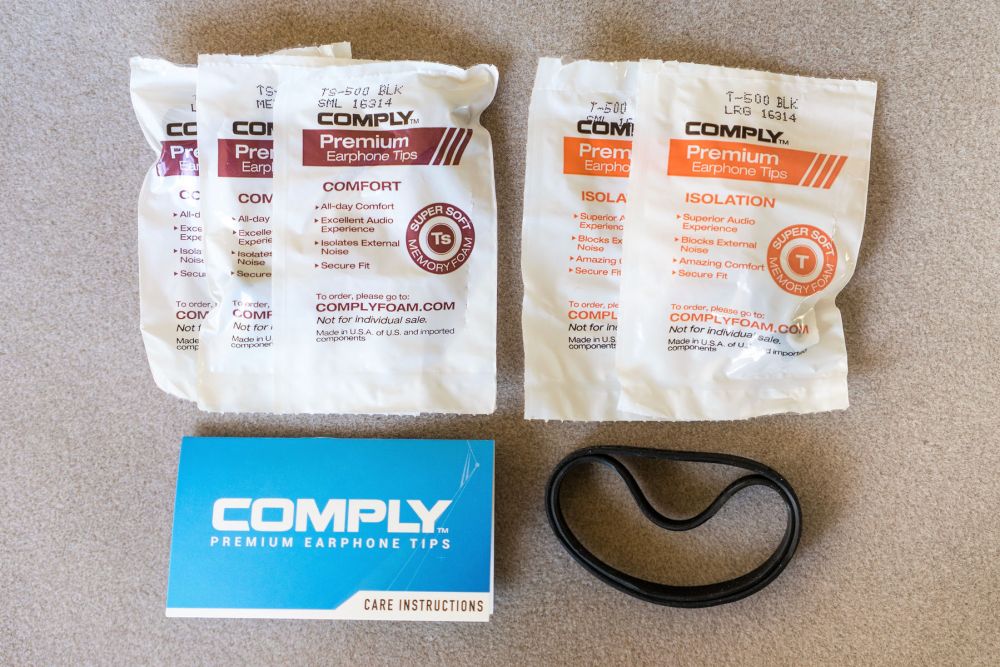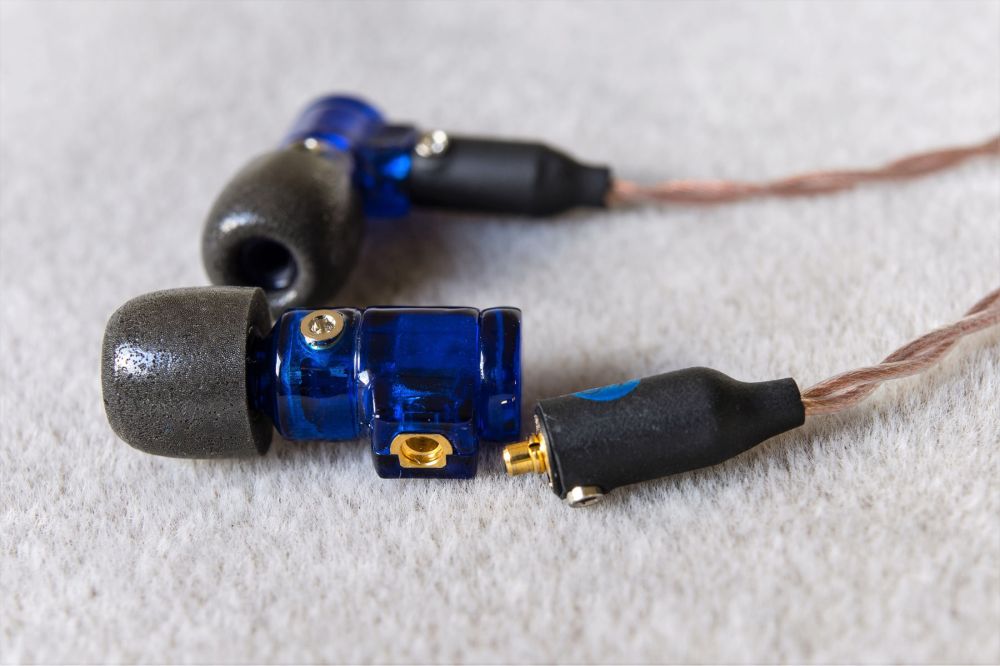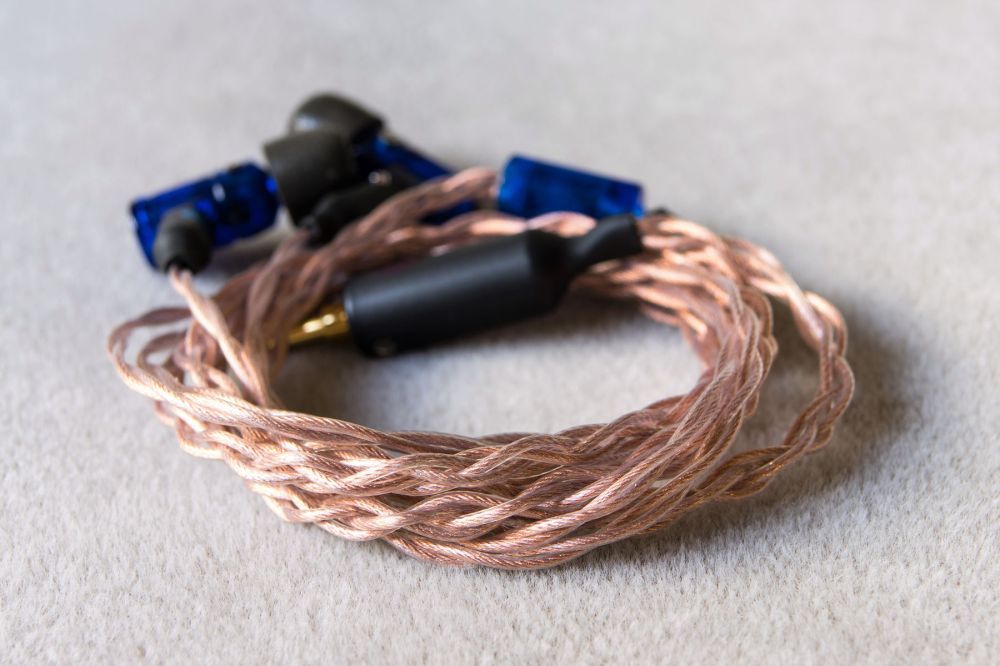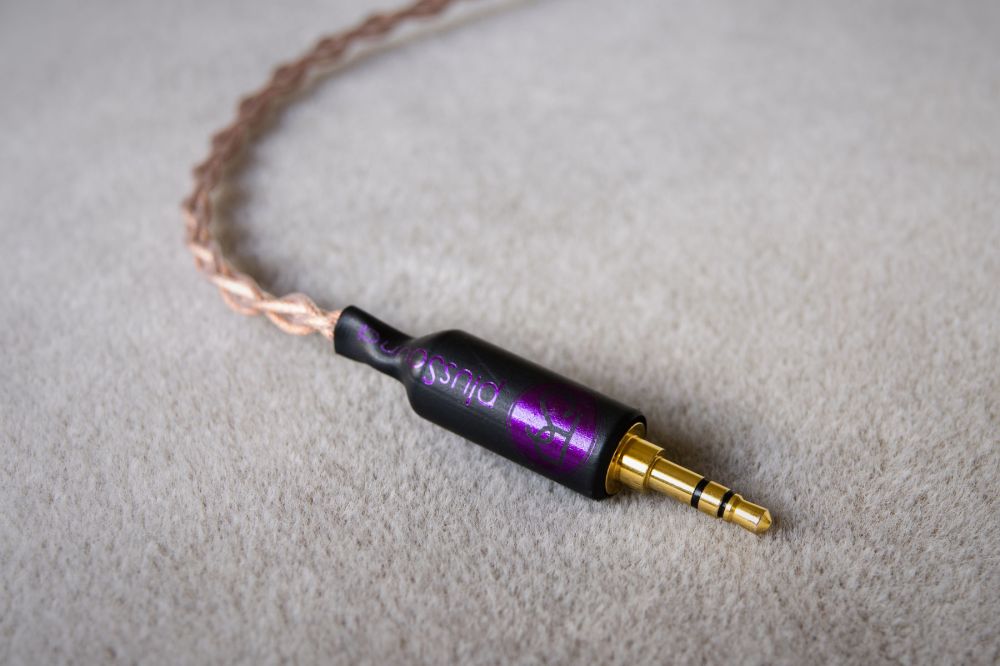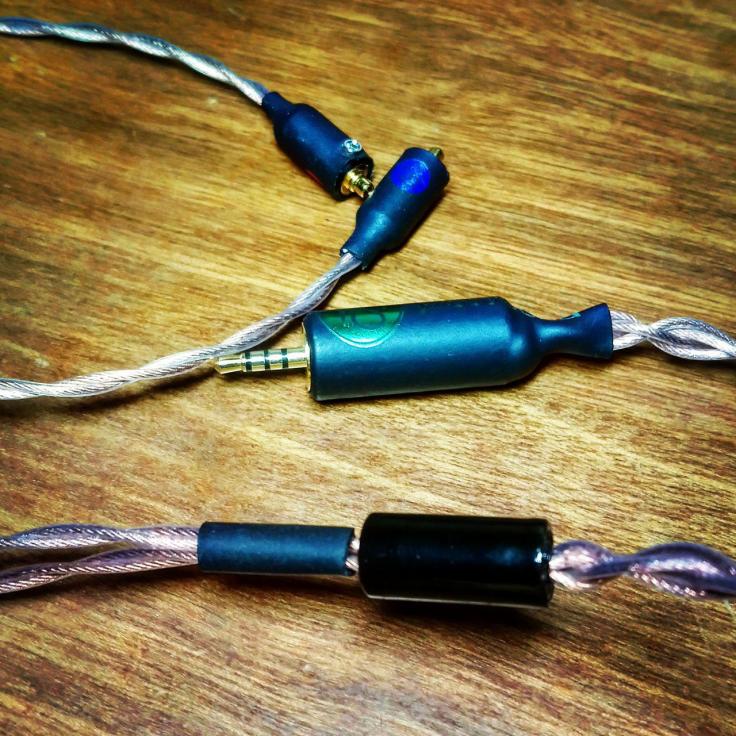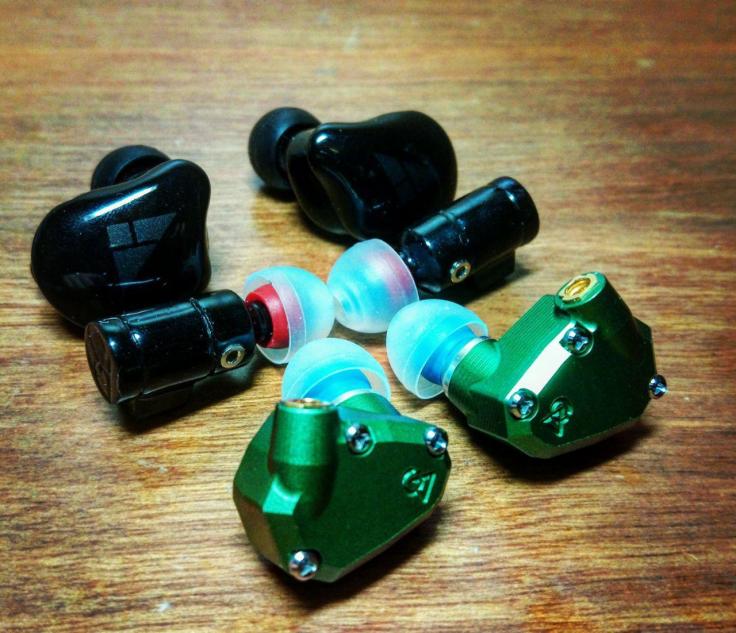Introduction –
When cable manufacturer ALO branched out into Universal earphones as Campfire Audio, they were met almost exclusively with success; Campfire has very quickly become a hugely popular and discussed brand. And hot on their heels is Plussound, a similarly experienced cable manufacturer who seek once again mix up the game by utilising cutting edge technologies and a keen eye for attention to detail. Plussound have released 3 in-ear models, all with unique, in-house designed balanced armature drivers topped off with their signature Exo-series MMCX cable. Let’s see if Plussound’s new offerings can reinvigorate the audio community like those before.
Accessories –
The Prism comes within a solid box with textured Plussound branding. The box is otherwise featureless without any indication of specifications or features. The box opens magnetically to reveal two altoid style tins, a black tin containing the accessories and a silver tin containing the earphones themselves.
Plussound include a delightful assortment of genuine Comply foam tips, 3 T500 tips and 3 sets of rounded TS500 tips, one pair of each in every size. Comply foams are great tips that provide excellent isolation and comfort, almost guaranteeing a solid fit regardless of ear shape though they do degrade after time. Unfortunately, no silicone tips are included though the Prism’s tuning is better suited towards the slightly warmer Comply’s anyway. Plussound also include two AMP/DAP stacking bands and a magnetic cleaning tool which is pretty nifty.
Overall, the unboxing isn’t lavish or quite as comprehensive as Dunu’s accessory suite, though the whole experience is thoroughly functional. I would perhaps like an additional carry case of some sort, I am concerned that the metal tin may scratch the iems though it’s a protective solution during travel.
Design –
All of Plussound’s new models utilise the same 3D printed housings. When compared to online readers, the earphones are larger than I expected though they are still considerably smaller than the 64Audio and Campfire Audio earphones. They feel simultaneously rock solid and handcrafted, courtesy of a hand finished paint job and the inclusion of Plussound’s signature EXO-series iem cable from factory. The Prisms are available in black and blue with a colour matched y-split on the cable. The black model looks more co-ordinated since the 3.5mm plug is always black though the blue model is tasteful enough for those tired of monochrome.
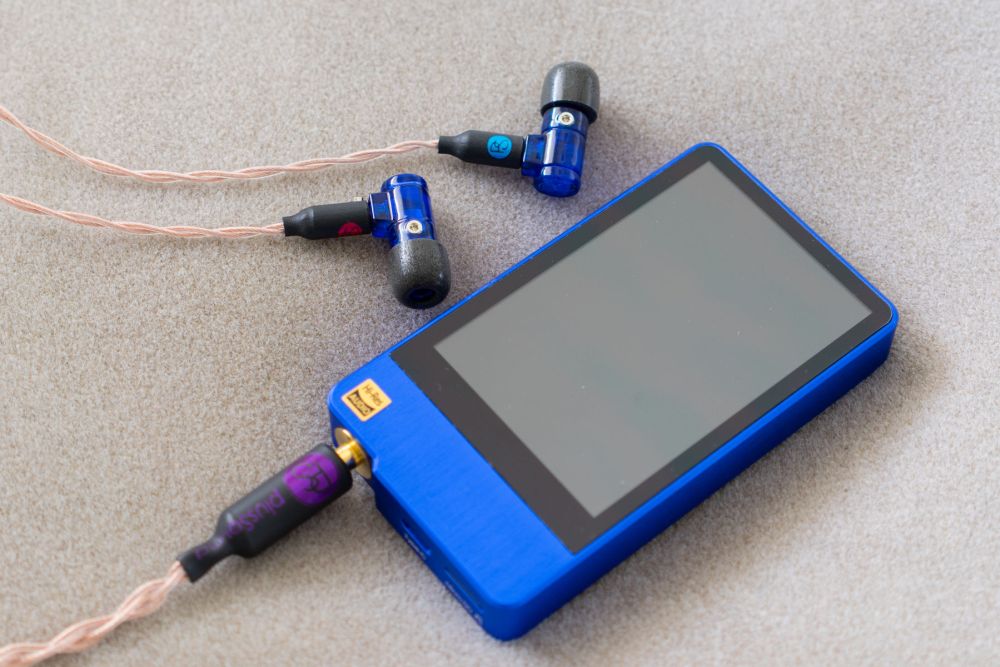
The housings are plastic but feel impeccably constructed; the 3D printed earpieces have absolutely no joins or seams. The earphones have quite an interesting design that is akin to Etymotic style earphones albeit larger. The housings are transparent and the plastic moulding is incredibly thick; Plussound have traded compactness in favour for superior acoustic properties. The earpieces have a hand painted gloss coat that gives them a super smooth, but slightly inconsistent finish. Small features such as the small bolts on either side of the earphone produce a very utilitarian look like that achieved by the armature based Campfire earphones and offer enhanced repairability should components require replacement or repair.
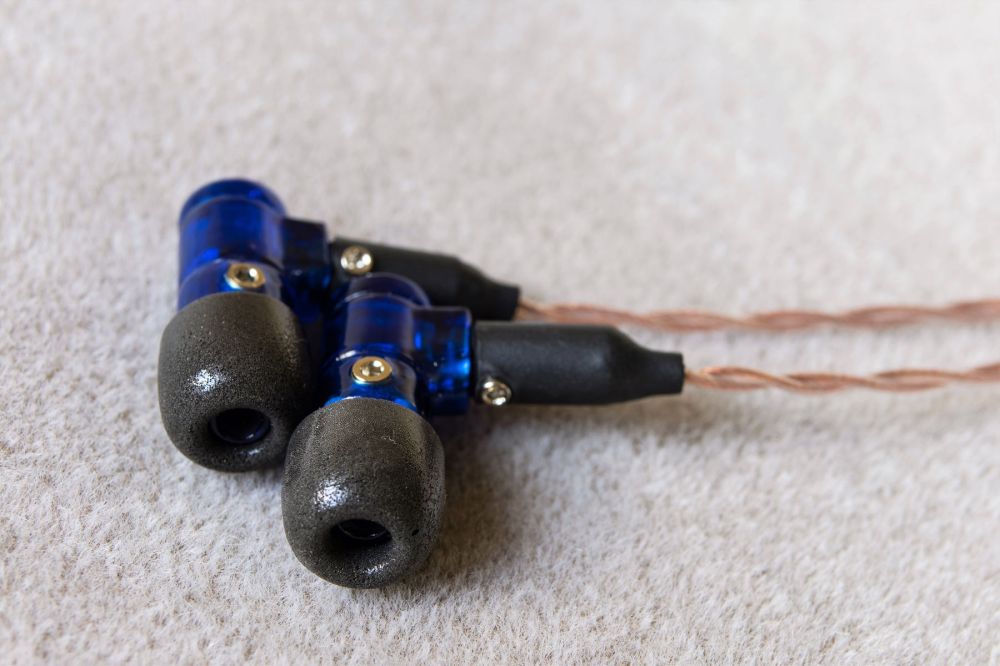
In use, the Prisms are an ergonomic earphone that achieves great long term comfort. The housings barely contact the ears at all with minimal outstanding features to cause discomfort. They were designed for a cable down fit and though their laterally placed strain reliefs and thick cable make them a bit awkward when worn over ear, it is doable. Due to the weight of the cable and their very lengthy housings, fit stability is just average; even with foam ear tips they wiggle themselves loose during any activity but walking. They definitely don’t lock into the ears like the Dunu, 64Audio and Campfire iems but they will be vastly more comfortable if you have smaller ears, a fair trade-off unless you intend to use them for running or stage monitoring. I found them far more practical to wear than either the 64Audio U3 or Dunu DK-3001, both of which are a bit strangely shaped.
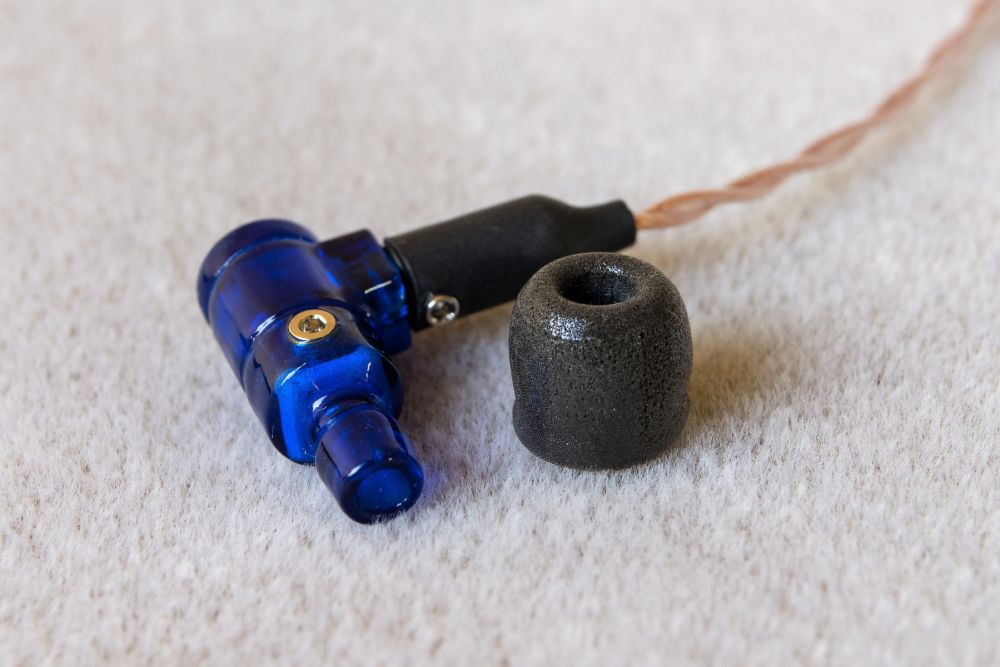
The Prisms have a long, straight nozzle that fits wide bore tips. This does limit fit depth to some degree though they are a very well sealing earphone overall. The Prisms are also fully sealed and when combined with those thick housings and reasonably deep fit, passive noise isolation is terrific, few earphones provide more. With great isolation and comfort, the Prisms are ideal for any kind of travel though the long housings do protrude quite a bit from the ear, creating above average wind nosie during commute.
The Prisms possess a removable cable that uses the tried and tested MMCX interface. The connectors are super tight and secure, I didn’t experience any accidental detachment nor any intermittency in my month of testing. The cable receives special mention since the Prisms come packaged with Plussound’s $200 EXO-series custom cable. While I only have a handful of cables at this price, the EXO is definitely one of my favourites.
It’s a 4-core braided OCC litz copper cable with robust but not unwieldy thickness. Aesthetically, the cable is gorgeous with a very professional construction and finish. The cable also doesn’t tangle at all but remains compliant enough to coil and pocket. It is a bit stiffer than the Effect Audio Ares II+ though the Ares is also a little more prone to tangling. The EXO cable has well finished but very DIY terminations; the MMCX connectors and plug are covered in heat shrink and the cable is secured via small screws which are visible from the exterior.
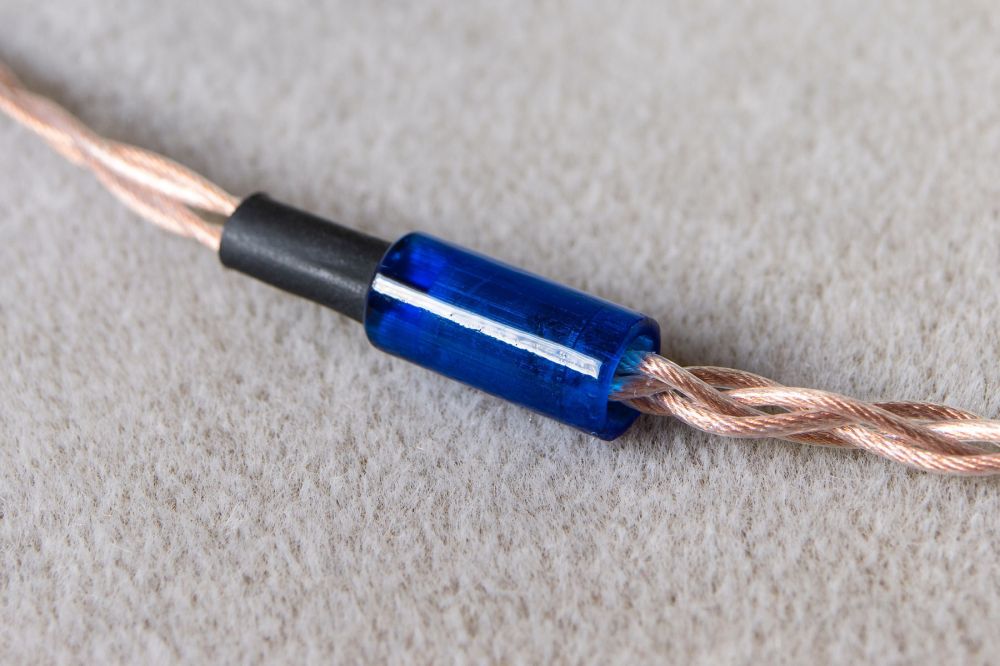
The y-split has the same construction as the earphones themselves though the finish of the cable on a whole is still less compelling than the EffectAudio cables that sport custom metal/carbon fibre connectors. A chin slider is implemented in the form of some plastic tubing. It’s simple but gets the job done, I found it to hold its place reliably in daily use. Plussound claim to have implemented some sort of shock absorption into the cable to prevent microphonic noise though I didn’t notice the Prism to be any quieter in that regard than a typical cable down earphone. This is easily alleviated by wearing the earphones over-ear or by using the slider or shirt clip.
Plussound offer the cable with a variety of plugs at no additional cost, they also offer a balanced variation if your source can take advantage of it.
Sound –
The Prism is Plussound’s mid-tier earphone, featuring two of their proprietary balanced armature drivers setup in a low/high configuration. It’s a very special sounding earphone that has some really intriguing characteristics that I rarely hear from any earphone at any price. It’s interesting to see how the properties of Plussound’s fabulous cable augment the Prism’s sound without characterising it and it’s great to see that the Prism’s themselves are transparent enough to take advantage of that. It was definitely interesting to listen to an earphone that includes a custom cable from factory as the Prisms sound is greatly influenced by the effects I typically expect when installing such a cable. Most notably, the Prism is super clean and separated with a dark background, easily the most unique aspect of this earphone’s sound.
In terms of tip choice, the earphones aren’t super tip sensitive though foams are well suited towards their more neutral tuning, providing a little extra warmth and taking the edge off their balanced armature treble. Silicone tips fit fine, wide-bore dual flange tips are best suited towards the Prism’s long nozzles though sonically, the silicone tips sounded too lean to my ears. For my preferences, I opted for the pre-installed T-500 Comply tips, all impressions below will be with those ear tips.
Tonality –
The Prism is a reasonably mellow, perhaps slightly mid-forward earphone that finds good overall balance. Hints of additional bass impact and upper treble presence imbue the sound with character and engagement without compromising transparency. Otherwise, the Prism is a very linear earphone that provides a more musical evolution of the very neutral tuning found on earphones like the Hifiman RE-600.
Drivability –
The Prism is a sensitive earphone though not outrageously so. Plussound don’t provide any specifications on their earphones though their sensitivity is pretty similar to the Dunu DK-3001 (110dB), meaning they will reach ear-splitting volume from almost any source. They also pick up a reasonable amount of hiss, slightly less than the Dunu’s but more than most earphones making a clean source important. Their transparency makes them quite source sensitive and they clearly take on the characteristics of the source they are being played on. I did not find amping to be necessary though it does help alleviate output impedance issues and hiss. The Prism found best synergy with my Oppo HA-2 and Fiio X7, both of which provided a little extra clarity to the Prism’s sound. Strangely, the I didn’t find myself enjoying the Prism with more musical sources like the X5 III and Mojo, mostly due to their midrange and high-end which both benefit from a slightly brighter source.
Soundstage, Imaging and separation –
It was with their soundstage that the Prism immediately represented the benefits of that fabulous cable. But not in terms of sheer space, the Prism, isn’t the largest earphone I’ve heard, not by a long shot. Rather, their imaging and separation is fantastic with a clear advantage over similarly priced earphones. The Prism is actually a reasonably intimate earphone, even songs with encoded soundstage detail are mostly inside the head though they never sound congested; they have just enough space to craft a convincing stage. Their stage is quite unorthodox, it’s more depth focussed and height, which is usually entirely absent from a lot of earphones, is exemplary. Imaging is also terrific and the earphones can achieve an almost holographic quality when listening to the right tracks. Separation is also fantastic, especially considering the type of tuning these earphones pursue. The Dunu DK-3001’s make for great comparison as an earphone that pursues the opposite sort of presentation. The Dunu’s are considerably larger, achieving an out of the head sound far more frequently. They are also more rounded between width and depth but lack the height of the Prism. Imaging is great but lacks the precision of the Prism and separation, despite the added space and more dynamic tuning is just comparable. While not the most spacious earphone, the soundstage on the Prism was one that I enjoyed immensely.
Bass –
The Prism’s have quite a neutral bass response augmented by a little extra mid-bass punch and deep-bass impact. The Dunu DK-3001 and 64Audio U3 both produce more bass quantity, the Dunu especially so, though the more neutral Campfire Nova’s are quite similar in both tuning and quantity. While all are tasteful and incredibly well-done earphones from experienced manufacturers, Plussound’s offering is easily comparable in terms of both tuning and quality. Bass is incredibly linear, consistent between tracks and completely lacks bloat, spill or any form of muddiness. The low-end is very tight, I would describe it as snappy rather than rhythm based, though it’s a performance that fits in very well with the rest of the sound. Bass is also very textured with high resolution throughout and the earphones have no issue dismantling complex passages. Some may find the Prism a little too lean, they definitely require some adjustment when coming from bassier earphones, though their slight warmth prevents them from coming off as sterile or analytical; they’re more akin to the articulate Grado GR10E than the more clinical Hifiman RE-600 in the low-end. For my personal tastes, I would prefer just slightly more low-end, most notably, the Prisms have an immediate lack of sub-bass, even among balanced armature earphones. While I used to believe that no armature earphone could reproduce sub-bass as well as a dynamic, a few have proved me wrong, the Campfire Audio Nova being a prime example. For Plussound’s asking price, I would expect a little more as the Prism has almost no sub-bass slam. And while their slight deep bass hump helps to imbue the sound with a little extra depth, the Prism produces a noticeably less visceral bass response than the 64Audio U3, Dunu DK-3001 and Nova. In all honesty, it probably won’t detract a lot from the listening experience for those who prefer balanced armature earphones, though those who are accustomed to dynamic drivers will find the Prism to be lacking that extra dimension. In return, the Prism is the most taught and has the best bass resolution of the bunch though buyers will ultimately have to consider their priorities and preferences.
Mids –
Despite the Prism’s lean low-end, I suspect their midrange will be the most polarising aspect to a lot of listeners. Midrange tuning resembles the Hifiman RE-600 quite a lot, they carry the same mid-forward presentation that is well balanced and linear throughout. And with that tuning comes transparency that makes the sound of the Prism very track dependent. That’s not to say that they aren’t versatile, but the Prism doesn’t flatter poorly mastered or encoded tracks like the more clarity orientated Dunu DK-3001 or even the 64Audio U3. Another interesting factor of the Prism’s midrange is their restraint. Where the vast majority of earphones around this price pursue that archetypical hi-fi sound that boosts clarity to achieve a revealing sound, the Prisms are rather quite mellow and they can sound almost veiled compared to other similarly priced earphones as a result. I wouldn’t call them an inherently veiled earphone in isolated listening, but they are susceptible to sounding a little closed off and sometimes nasal on poorly mastered tracks, something the RE-600 didn’t suffer from. For instance, the Prisms sounded natural and realistic when listening to David Bowie’s “Everyone Says Hi” but sounded hollow and veiled when listening to Hilltop Hood’s “I Love It”. This can be taken as both a negative and a positive because transparency is something a lot of manufacturers strive for but fail to achieve and Plussound have most definitely attained it. But as a result, the Prisms are more temperamental than most other earphones and buyer enjoyment will depend a lot on music tastes; they excel with Asian music, electronic and modern pop but lack aggression for rock and clarity for jazz.
But though I think the Prims tuning is mostly well done, their quality does leave me wanting compared to the immediate competition. Starting with the positives, vocals on well-mastered track such as Akdong Musician’s “Play” album have a really unique, sliky character and a dark background which grants mid notes with a quality of refinement. They are super clean, every instrument is intimate due to their mid-forward tuning though each note is surrounded by its own space that prevents the midrange from becoming even remotely congested or over-forward. By comparison, the substantially clearer and more spacious DK-3001 lacks the separation of the Prism, and this quality is the Prisms greatest asset in the face of the hyper-revealing U3 and the super dynamic Dunu. Resolution is also impressive, similar to the DK-3001 but failing to match the U3. Detailing is where the Prisms falter, neither foreground nor background detail retrieval is quite as good as the competition. Their more laid-back nature further exacerbates this issue as does their lesser clarity; they don’t retrieve details like the DK-3001 nor are they as revealing as the U3’s. The upside to this is that the Prisms are better suited towards long-term listening than most though they do miss some upper midrange bite which saps them of a lot of engagement.
Treble –
Luckily, the Prisms do a lot to redeem themselves in their treble performance, both in tuning and quality. Similar to the rest of their sound, treble is very neutral and linear but has fantastic extension. The Prism produces incredibly realistic and natural treble tones that quickly reveal how peaky a lot of other earphones are. Compared to the DK-3001, the Prism was immediately more natural and less splashy within their lower treble, where the DK-3001 gets a bit uneven. The U3’s are more revealing and possess considerably more treble attack, but the Prism separates better and will be a far better choice than either for those who are sensitive to treble. When listening to Radiohead’s “Creep”, a song that easily reveals any lower-treble faults, the Prism provided a very lifelike and accurate performance with minimal compromise on detail or clarity. Cymbals were textured and lacked any splashiness. The DK-3001 and U3 are both notably more forward within the lower treble, a common tuning technique that enhances treble detail presentation. That being said, neither was substantially more detailed; perhaps the DK-3001 was very slightly more detailed at the expense of sounding a little crunchier. Radiohead’s “No Surprises” revealed similar findings. All earphones did a great job resolving the fine treble detail within this track and also discriminating between each guitar strum, vocal effect and treble tone. As before, the Prisms had the best separation, the U3’s provided the clearest rendition of each instrument and the Dunu’s contained the most information though treble was slightly busy, slightly compromising separation during certain passages.
Of course, the Prism’s treble response isn’t perfect either, and while their extension is nothing short of impressive, the 4 driver Dunu’s and triple driver U3’s resolve slightly more within the very highest registers. Elton John’s “Rocketman” illuminated a small roll-off at the very top of the Prism’s frequency response that made high hats sound slightly truncated and thin on the Prism. By contrast, the U3 had more air to these notes while the Dunu had more texture and detail. That being said, when the track gets complex, the Prisms once again demonstrates that dark sense of space between notes and this quality is perhaps most important within the treble. It’s great to see that up top, their super clean and separated presentation is backed up by matching resolution and detail, providing a thoroughly compelling high-frequency performance that is just as rewarding as class leaders around this price, just more natural.
Verdict –
The Prism is surrounded by nothing but excellence and manufacturers need to do a lot these days to really stand out. Plussound have made a noble effort breaking into the iem market, their pricing demonstrating their confidence and experience within the field. And in person, the Prism is just as unique and exclusive as one would imagine, given its 3D printed housings, proprietary dual drivers and splendid custom cable all topped off with that charming handmade vibe. However, I can’t help but feel that the Prism is missing that last acoustic element that makes a $550 earphone sound $550. Mostly, I would attribute this to their midrange performance which is just a little too laid back and flat. I’m sure many will love the tuning on the Prisms but I think just as many will prefer the tuning offered by competitors.

The Prism isn’t a bad earphone at all but I suspect the Gamut with its extra midrange driver is really Plussound’s golden child. But that earphone is more expensive yet and the Prism is already slightly pricier than even the U3, Nova and DK-3001 ($549 vs $499), that’s B-stock Jupiter pricing! But beyond their sound, Plussound’s brilliant cable and 3D printed housings are immediately sturdier than competing models. Sure, the stainless steel Dunu is more rugged, but the Prism isolates far more while being more ergonomic in every way. The Prism will captivate listeners looking for a non-fatiguing, comfortable and natural sounding earphone; because at the end of the day, comfort and individual preferences are just as important as the earphone’s technical ability.
Verdict – 7.5/10, While the midrange leaves me wanting, the Prism is ultimately a transparent and natural sounding earphone with fabulous resolution and separation. Top that off with superb comfort and isolation and the Prism makes for a nicely rounded product. The Prism is a good earphone augmented by a great cable and I look forward to seeing more earphones from Plussound in the future.
Thanks for reading! If you enjoyed my review, please have a look at my website for more just like it:
https://everydaylisteningblog.wordpress.com/2017/06/18/plussound-prism-review-low-key/








